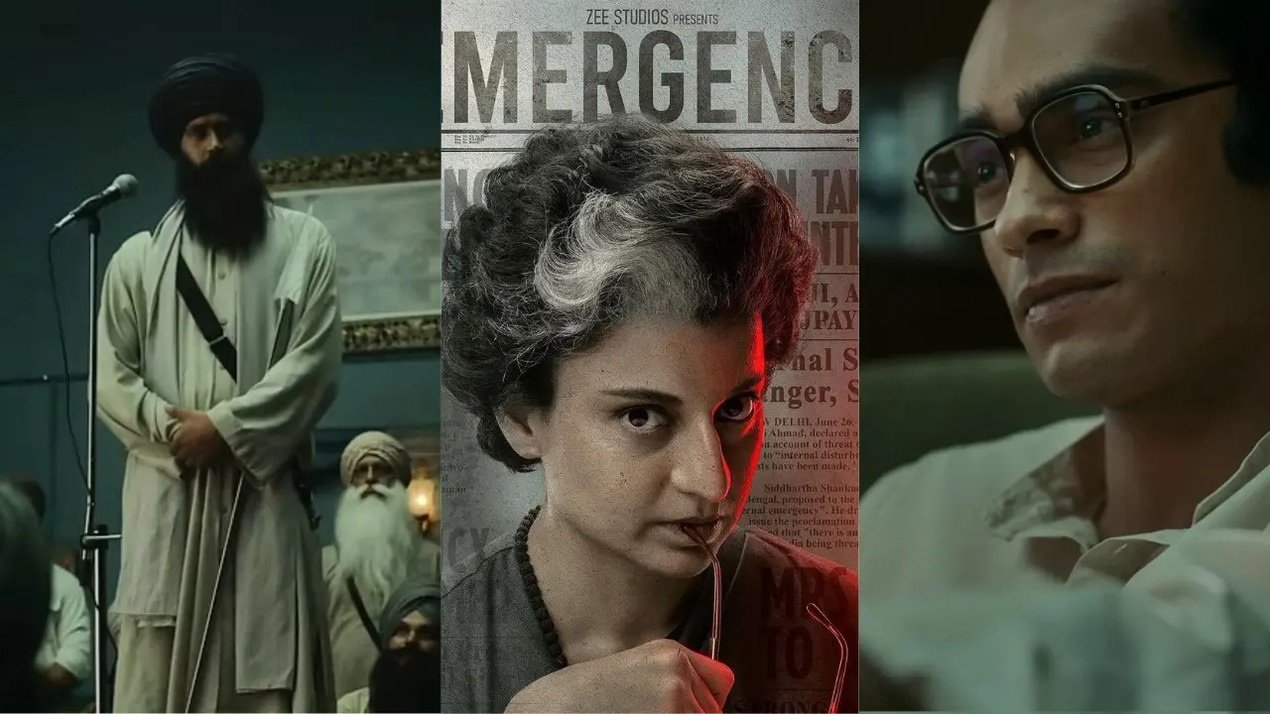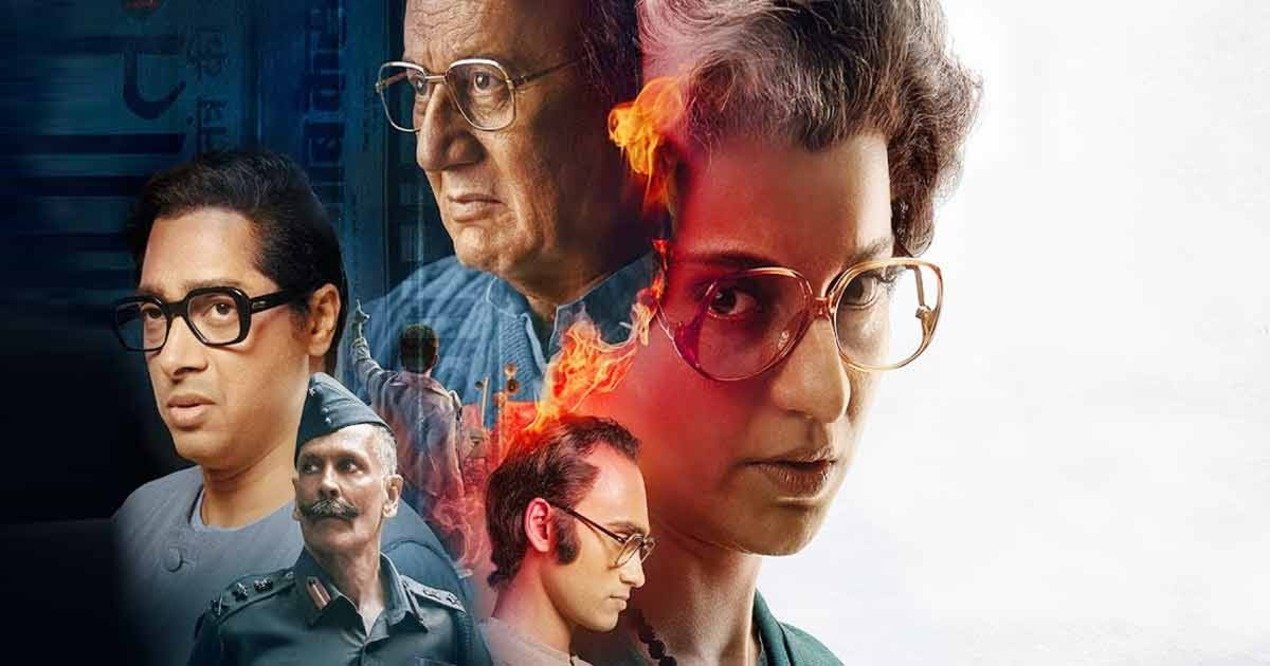Introduction
Kangana Ranaut’s much-anticipated film, Emergency, has finally hit the screens, stirring conversations across audiences and critics alike. Directed and headlined by Ranaut herself, the film revisits one of the most controversial chapters in Indian political history—the Emergency period of 1975-77. Known for her fearless choice of roles and her passion for storytelling, Ranaut attempts to capture the political upheaval, personal stories, and the human cost of those turbulent years.
In this review-based article, we delve into the cinematic merits, historical representation, performances, and overall impact of Emergency as a significant addition to contemporary Indian cinema.
Plot and Historical Context
The Emergency declared by then Prime Minister Indira Gandhi is widely regarded as a dark phase in Indian democracy. The film focuses on the political and personal dynamics of this period, offering a dramatized yet impactful portrayal of events that shaped the nation. Kangana Ranaut steps into the role of Indira Gandhi, delivering a performance that encapsulates the complexities of a leader who wielded absolute power.
The plot intricately weaves historical events with fictionalized narratives to give audiences a sense of the social and political climate during the Emergency. From the censorship of the press to mass sterilizations and the suspension of civil liberties, Emergency does not shy away from depicting the grim realities of the era. It also delves into the personal dilemmas faced by political leaders, activists, and ordinary citizens caught in the crossfire.

Kangana Ranaut: Actor and Director
Kangana Ranaut’s dual role as the lead actor and director is one of the highlights of the film. Her portrayal of Indira Gandhi is nuanced, capturing the iron-willed determination, vulnerability, and moral ambiguities of the character. Ranaut’s meticulous attention to detail—from her voice modulation to the physical transformation—makes her performance compelling.
As a director, Ranaut exhibits a strong command over the narrative, balancing historical accuracy with cinematic flair. The pacing of the film is deliberate, reflecting the tense atmosphere of the Emergency period. While some sequences feel dramatized for effect, they serve the purpose of engaging a wide audience.
Supporting Cast and Performances
The supporting cast in Emergency delivers noteworthy performances, adding depth to the narrative. Anupam Kher plays Jayaprakash Narayan, the veteran political leader and key figure in the opposition against the Emergency. Kher’s portrayal exudes wisdom and conviction, serving as a moral counterpoint to Indira Gandhi’s authoritarian stance.
Shreyas Talpade, in the role of Atal Bihari Vajpayee, brings a calm yet impactful presence to the screen, highlighting the resilience of opposition leaders. Milind Soman as Field Marshal Sam Manekshaw adds a layer of intrigue, representing the military’s role during this politically charged period.
The ensemble cast ensures that the film remains a multi-dimensional exploration of the era, rather than just a one-woman show. Each character contributes to the narrative, showcasing diverse perspectives on the Emergency.

Cinematography and Visual Aesthetics
The film’s cinematography, handled by Pankaj Kumar, is a visual treat. The use of muted tones and stark contrasts effectively captures the somber mood of the 1970s. Iconic locations like the Parliament House and Rashtrapati Bhavan are recreated with meticulous attention to detail, immersing viewers in the era.
The lighting and camera angles play a significant role in emphasizing the emotional and political undercurrents. Close-up shots of Kangana Ranaut during pivotal moments highlight the internal conflicts of her character, while wide-angle shots of protests and rallies convey the scale of public dissent.
Screenplay and Dialogues
The screenplay of Emergency strikes a balance between historical events and dramatic storytelling. Written by Kangana Ranaut and Ritesh Shah, the narrative seamlessly transitions between political machinations and personal struggles. The dialogues are sharp and impactful, often drawing parallels with contemporary issues.
One of the standout moments in the film is a heated exchange between Indira Gandhi and her political advisors, where she justifies the imposition of Emergency as a necessary step to maintain stability. Such scenes underscore the ideological conflicts that defined the era, leaving viewers with much to ponder.
Music and Background Score
The background score by A. R. Rahman elevates the emotional intensity of the film. From the haunting strings accompanying scenes of censorship to the triumphant notes during moments of resistance, the music enhances the storytelling experience.
The film’s soundtrack features a mix of patriotic and reflective songs, resonating with the themes of resilience and introspection. Each track feels carefully placed, complementing the narrative without overshadowing it.
Historical Representation and Accuracy
While Emergency takes creative liberties for dramatic effect, it remains grounded in historical facts. The film does a commendable job of presenting the socio-political landscape of the 1970s, including the clampdown on press freedom, forced sterilizations, and the rise of the opposition movement.
Critics have noted that certain aspects of the Emergency are oversimplified or dramatized, but these choices appear intentional to make the film more accessible to a broader audience. Ranaut’s portrayal of Indira Gandhi, though humanized, does not shy away from depicting the authoritarian tendencies of her leadership.
Themes and Social Commentary
At its core, Emergency is more than a historical drama; it’s a commentary on the fragility of democracy and the consequences of unchecked power. The film raises pertinent questions about the balance between national security and individual freedoms, the role of dissent in a democracy, and the enduring relevance of these debates in today’s political landscape.
By revisiting the Emergency, Ranaut invites viewers to reflect on the lessons of history and the importance of safeguarding democratic values. The film’s themes resonate strongly in the current socio-political context, making it a timely and thought-provoking watch.

Critical Reception
Since its release, Emergency has garnered mixed to positive reviews. Critics have praised Kangana Ranaut’s performance and direction, as well as the film’s visual and narrative strengths. However, some have pointed out the occasional heavy-handedness in its storytelling and a tendency to glorify certain characters.
Audience reactions have been largely favorable, with many appreciating the film’s bold attempt to tackle a complex and controversial subject. Social media platforms are abuzz with discussions about the film’s portrayal of historical events and its relevance to contemporary politics.
The Cultural Impact of “Emergency”
Beyond its cinematic merits, Emergency has sparked conversations about the role of art in shaping public memory. By bringing the Emergency period to the forefront, the film encourages younger generations to learn about a pivotal chapter in India’s history.
Kangana Ranaut’s commitment to creating meaningful cinema that challenges conventional narratives is evident in this project. Emergency serves as a reminder of the power of storytelling to inspire dialogue, foster understanding, and provoke critical thought.
Conclusion
Emergency is a bold and ambitious film that captures the essence of a tumultuous era in Indian history. Kangana Ranaut’s dual role as actor and director is commendable, delivering a performance and vision that resonate deeply with audiences. While the film is not without its flaws, its strengths lie in its ability to blend historical events with cinematic storytelling, creating a narrative that is both engaging and thought-provoking.
For viewers seeking a film that goes beyond entertainment to explore themes of power, resistance, and resilience, Emergency is a must-watch. It stands as a testament to the enduring relevance of history and the importance of remembering it, not just as a cautionary tale but as a source of inspiration for the future.
